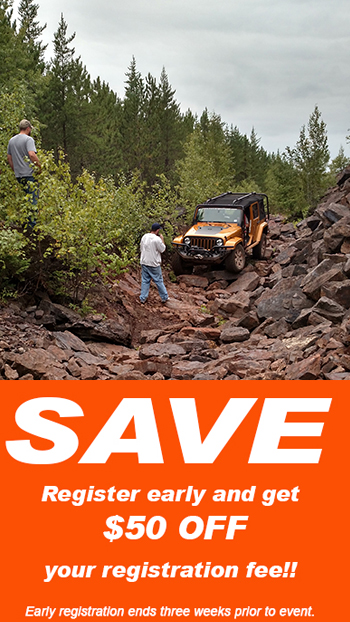I’m not sure I remember how cheap gas used to be. I mean, as a little kid you don’t really think about it…not until you have to buy it yourself.
Many, many years ago I wanted a dirt bike and I knew it required high octane (premium) gas. At 99 cents a gallon I pretty much decided I couldn’t afford a dirt bike. A buck a gallon gas…can you even imagine that now?
With the summer driving season upon us, it’s time to talk about fuel economy. It’s a tough trade off. The bigger tires and lift kit, the heavy winch and aerodynamics of a brick…I just can’t pretend we drive the most economical vehicles on the street. But I did read an interesting factoid (on the internet, so it must be true): The Jeep Wrangler is “greener” than the Toyota Prius. The argument goes something like this:
Over the life of each vehicle (that includes manufacturing all the parts that make up the vehicle, assembling all those parts, driving the vehicle, servicing the vehicle, driving the vehicle some more, and eventually scrapping the vehicle…referred to as “dust to dust” cost), the amount of energy and the environmental impact it takes to drive a Prius hybrid is higher than driving a Jeep Wrangler. Think about it. Those batteries are tough on the environment to dispose of. The design and manufacturing that goes into the more sophisticated Prius drives up it’s score. The simple design of the Jeep and the “rugged construction” contribute to a longer life (eliminating the impact and expense of replacing it sooner). When you consider ALL the factors, not just the mpg on the window sticker, this becomes a pretty compelling argument.
So, now that we’ve established that we are driving the greener vehicle, let’s figure out what we can do to widen the gap and increase the miles per gallon that we drive. Start out by tracking your mileage.
Log your miles driven and fuel used on every tank of gas. Some vehicles have a computer to calculate this, but often that is an “estimated” or “averaged” number. I prefer to go “old school” with the calculator on my “new fangled” cell phone. The fuel economy number is indisputable…if I drove 333 miles on 24.2 gallons of gas, I got 13.76 mpg. If my logbook shows higher or lower numbers, I can try to interpret what’s going on. Highway miles, steady speed, big tailwind, heavy traffic…all these factors affect the actual mileage. Here are some tips to trend your own mileage higher.
The first thing to address is ensuring we have the correct tire pressure (in the last issue we discussed correct trail and street tire pressures). On the street, turning tires that are underinflated requires more effort and that burns more fuel. This is a cheap and easy variable to control.
The biggest single thing you can do to improve your mileage doesn’t cost anything but time. Slow down on the highway! If the speed limit is 70mph, try 65…or even 62. The amount work it takes to push that air is remarkable, and the faster you go…the bigger the effect. I tow a lot of miles and can tell you firsthand. Slowing down can be worth an easy 10-15%. When I am filling up well over $100 each tankful, an extra 10 bucks each time adds up fast. I know…we are all in a hurry and just want to get there sooner, but this country lowered the speed limit to 55mph back in the 1970s for exactly this reason. Driving slower uses less gas, period.












